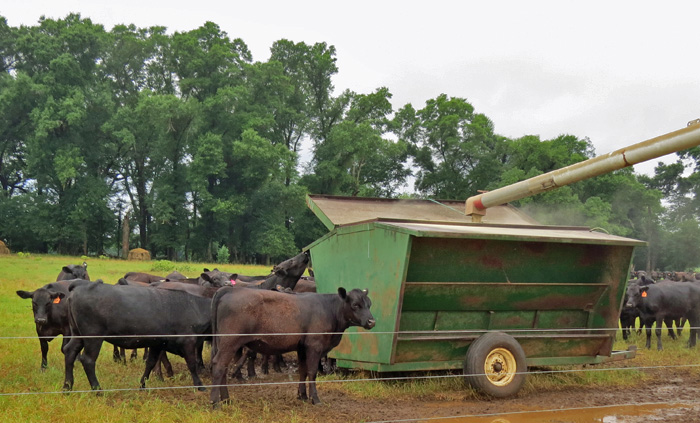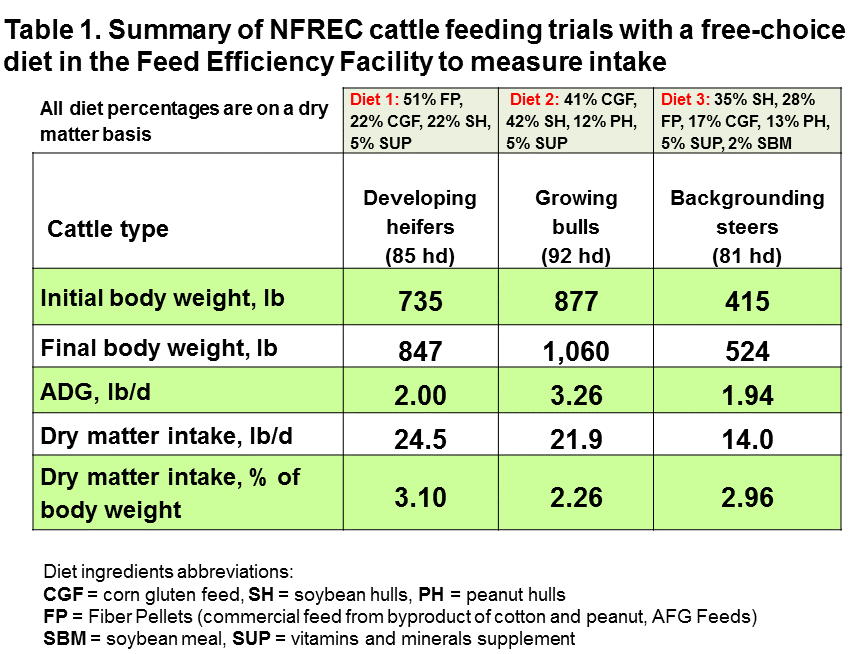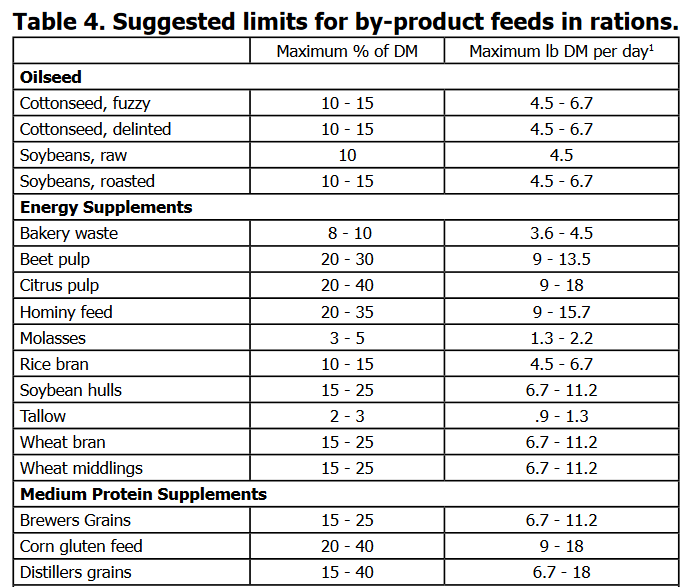
Supplementing replacement heifers utilizing a high-fiber diet with a bulk feeder at the North Florida Research and Education Center’s beef Unit. Photo Nicolas DiLorenzo
Nicolas DiLorenzo, State Beef Specialist, University of Florida NFREC
What can you feed in bulk to cattle free-choice?
One of the most common questions that county agents and state specialists receive this time of the year is: what commodity feed can I use to supplement cattle free-choice? (provided in bulk feeders to cattle as often as they want to eat) Often this question is followed by some explanation about how inconvenient it is to “bucket feed” every day, or how expensive it is to plant winter annuals. The question is quite valid, and the reasons for free-choice feeding are also very sound: to provide decent weight gains during the winter, while minimizing the inputs, mainly in terms of the time and labor required for daily feeding.
Beef cattle producers in the Panhandle have a competitive advantage over their Central and South Florida counterparts. The existence of a very strong cotton and peanut industry in Northwest Florida, provides large amounts of high-fiber byproducts that can be utilized for cost-effective supplemental feeding strategies for beef cattle. With an annual production of 380 million lbs of peanuts (100,500 acres planted) and 191,200 bales of cotton (102,000 acres planted), the Florida Panhandle region has a steady supply of fibrous byproducts that need to find a use or be disposed of. Fortunately for many agricultural industries such as bioethanol, sugarcane, corn, soybeans, canola, cotton, peanuts and many more, cattle are great recyclers. The ability of the rumen microbes (bugs) to digest a great majority of biological compounds, but in particular fiber, makes cattle unique in terms of the flexibility for use of byproducts as feeds.
High-Fiber Cotton and Peanut Byproducts
Cattle producers have taken advantage of byproducts such as gin trash, cottonseed hulls, or peanut hulls for many years in this region. While these products are generally low in energy or protein, they can be of great help as a “filler” or “carrier” to dilute commodities with more concentrated nutrients. There has been a recent influx of agro-industries that capitalized on the abundance of some of these byproducts to create very cost effective cattle feeding options, often in the form of pelleted commodity feeds in the tri-state region. These high-fiber byproducts can facilitate the feeding of much higher quality commodities, such as corn gluten feed, distillers grain, or soybean hulls, in free-choice bulk feeders, reducing the risks from overconsumption.
Why do feeds such as corn gluten feed or soybean hulls need to be “diluted” or mixed with these high fiber byproducts? There are a few reasons. The first one is to avoid certain metabolic disorders that are common when feeding certain commodities. For example, the high sulfur content of corn gluten feed or distillers grains may lead to sulfur toxicity in cattle, a condition known as polioencephalomalacia, or simply “polio” or “blind staggers.” Similarly, over-consumption of soybean hulls by cattle can lead to the development of bloat, because of the inability of cattle to rapidly eructate (belch) the gases produced by the rapid fermentation of this soybean byproduct. Even if hay is available free-choice, cattle will overconsume nutrient-dense commodity feeds if they are available without limit. The chart below (source UGA – Considerations for Using By-Product Feeds) provides some guidelines for limits on some common byproduct feeds. Mixing high-fiber byproduct feeds with nutrient-dense commodities will allow producers to feed the mix free-choice and greatly reducing the risk of developing any metabolic disorders.
How much high-fiber byproduct should be fed?
As a general rule, byproducts such as peanut hulls or cottonseed hulls, do not need to be included at more than 20% of the diet to prevent metabolic diseases. In fact, most high-concentrate diets only require 10% of a long fiber source to maintain rumen health. In some cases high-fiber byproducts are used in greater proportions in order to “hold back” weight gains, as would be the case with developing heifers. The following chart shows a summary of several research studies conducted at the University of Florida-NFREC, where diets with varying inclusions of fibrous byproducts were feed free-choice to growing beef cattle. These can be used as a guide of how much to expect in terms of weight gain as well as feed intake.
 Take home message
Take home message
Back to the main question – Can I feed commodities free choice to cattle? You certainly can, if you take advantage of the fibrous byproducts from the cotton and peanut industries. When pushing cattle to gains above 3 lbs/day, the inclusion of 10 to 12% dry matter of either ground hay, peanut hulls, or cottonseed hulls in the diet dry matter may be sufficient to maintain rumen health without sacrificing daily weight gain. When backgrounding cattle, as much as 50% of the dry matter diet can be fibrous byproducts and still allow very good (perhaps even excessive) daily gains, but at a very competitive cost per pound of gain.
For more information on this topic, use the following publication links:
Alternative Feeds for Beef Cattle
Considerations for Using By-Product Feeds
- Stretching Hay Reserves is Critical during this “Flash Drought” - September 26, 2025
- 2025 Florida Bull Test Sale Sets Average Price Record - March 7, 2025
- Intake Limiters:Old Technology for Modern Beef Cattle Supplementation - September 20, 2024


